Serving 1,396 students in grades 9-12, Amos P. Godby High School ranks in the bottom 50% of all schools in Florida for overall test scores (math proficiency is bottom 50%, and reading proficiency is bottom 50%).
The percentage of students achieving proficiency in math is 29% (which is lower than the Florida state average of 52%). The percentage of students achieving proficiency in reading/language arts is 34% (which is lower than the Florida state average of 52%).
The student:teacher ratio of 21:1 is higher than the Florida state level of 17:1.
Minority enrollment is 89% of the student body (majority Black), which is higher than the Florida state average of 65% (majority Hispanic and Black).
Quick Stats (2025)
- School Type: Magnet School
- Grades: 9-12
- Enrollment: 1,396 students
- Student:Teacher Ratio: 21:1
- Minority Enrollment: 89%
- Graduation Rate: 80% (Btm 50% in FL)
- Overall Testing Rank: Bottom 50%
- Math Proficiency: 29% (Btm 50%)
- Reading Proficiency: 34% (Btm 50%)
- Science Proficiency: 48% (Btm 50%)
- Source: National Center for Education Statistics (NCES), FL Dept. of Education
School Overview
Amos P. Godby High School's student population of 1,396 students has stayed relatively flat over five school years.
The teacher population of 68 teachers has grown by 11% over five school years.
School Type
Grades Offered
Grades 9-12
Total Students
1,396 students
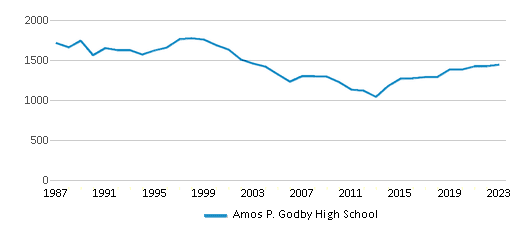
Gender %
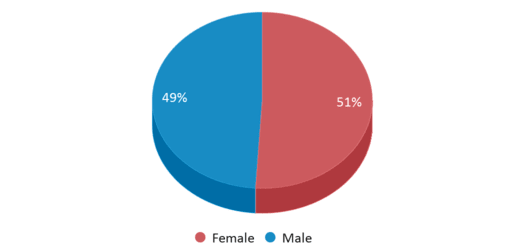
Total Classroom Teachers
68 teachers
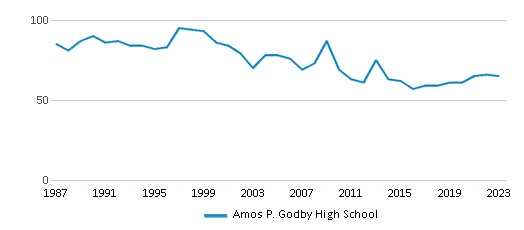
Students by Grade
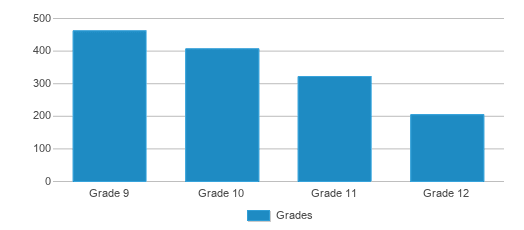
School Rankings
Amos P. Godby High School ranks within the bottom 50% of all 3,704 schools in Florida (based off of combined math and reading proficiency testing data).
The diversity score of Amos P. Godby High School is 0.49, which is less than the diversity score at state average of 0.70. The school's diversity has stayed relatively flat over five school years.
Overall Testing Rank
#3188 out of 3704 schools
(Bottom 50%)
(Bottom 50%)
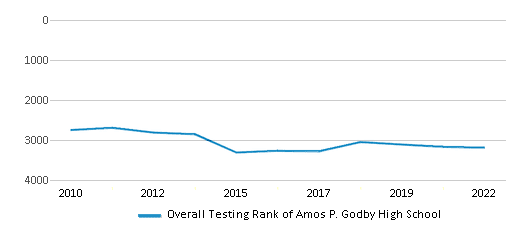
Math Test Scores (% Proficient)
29%
52%
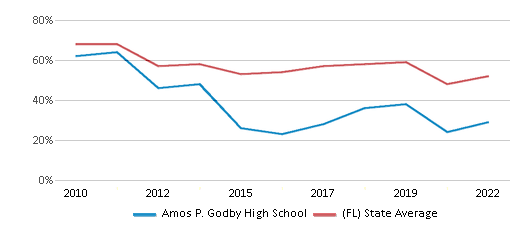
Reading/Language Arts Test Scores (% Proficient)
34%
52%
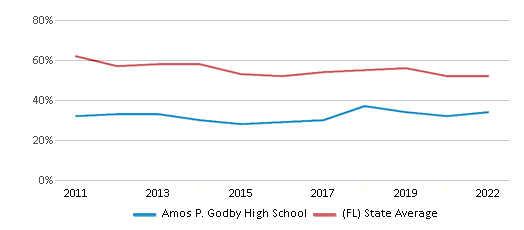
Science Test Scores (% Proficient)
48%
52%
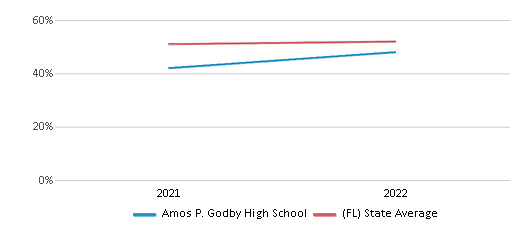
Student : Teacher Ratio
21:1
17:1
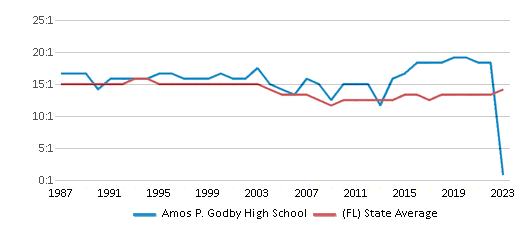
American Indian
n/a
n/a
Asian
1%
3%
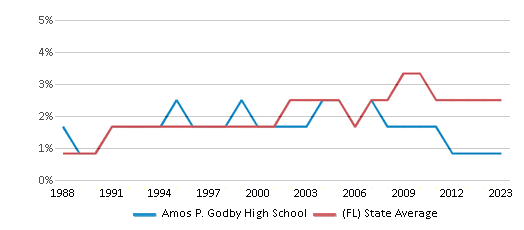
Hispanic
14%
37%
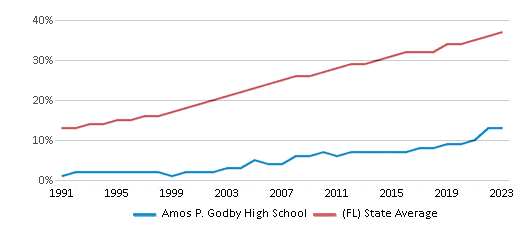
Black
69%
21%
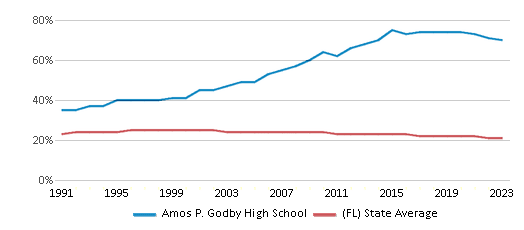
White
11%
35%
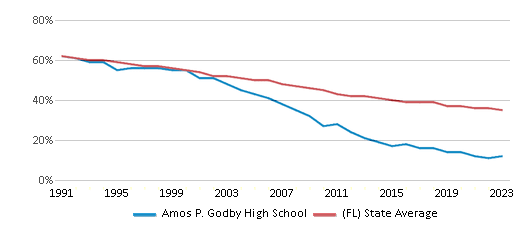
Hawaiian
n/a
n/a
Two or more races
5%
4%
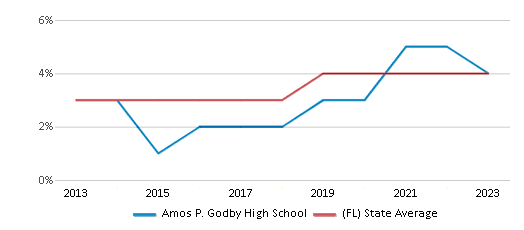
All Ethnic Groups
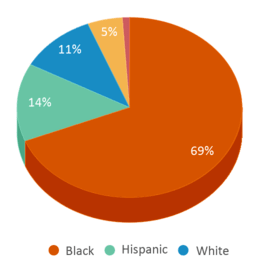
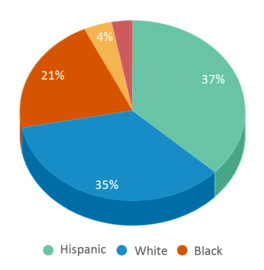
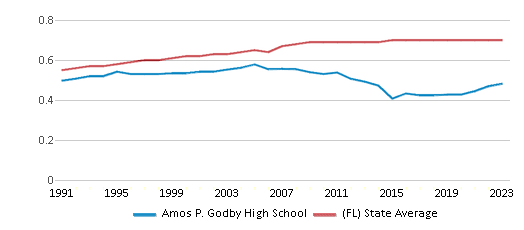
Graduation Rate
80%
87%
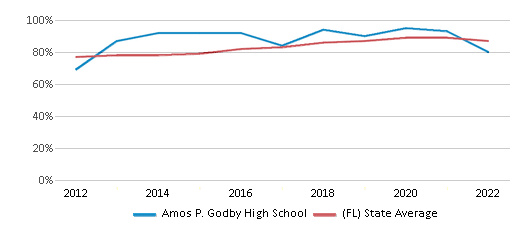
Participates in the National School Lunch Program (NSLP)
Yes
Eligible for Free Lunch
58%
47%
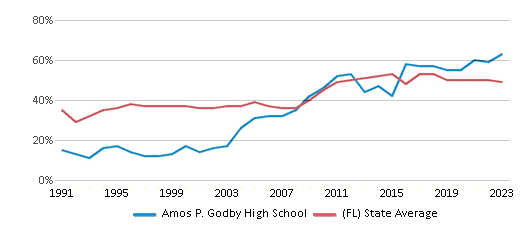
Eligible for Reduced Lunch
5%
4%

School Statewide Testing
School District Name
Source: National Center for Education Statistics (NCES), FL Dept. of Education
Profile last updated: 02/09/2025
Frequently Asked Questions
What is Amos P. Godby High School's ranking?
Amos P. Godby High School is ranked #3188 out of 3,704 schools, which ranks it among the bottom 50% of public schools in Florida.
What schools are Amos P. Godby High School often compared to?
Amos P. Godby High Schoolis often viewed alongside schools like Leon High School, Lincoln High School, James Rickards High School by visitors of our site.
What percent of students have achieved state testing proficiency in math and reading?
29% of students have achieved math proficiency (compared to the 52% FL state average), while 34% of students have achieved reading proficiency (compared to the 52% FL state average).
What is the graduation rate of Amos P. Godby High School?
The graduation rate of Amos P. Godby High School is 80%, which is lower than the Florida state average of 87%.
How many students attend Amos P. Godby High School?
1,396 students attend Amos P. Godby High School.
What is the racial composition of the student body?
69% of Amos P. Godby High School students are Black, 14% of students are Hispanic, 11% of students are White, 5% of students are Two or more races, and 1% of students are Asian.
What is the student:teacher ratio of Amos P. Godby High School?
Amos P. Godby High School has a student ration of 21:1, which is higher than the Florida state average of 17:1.
What grades does Amos P. Godby High School offer ?
Amos P. Godby High School offers enrollment in grades 9-12
What school district is Amos P. Godby High School part of?
Amos P. Godby High School is part of Leon School District.
School Calendar
View the Amos P. Godby High School yearly calendar below. Note key dates such as:
Event
Date
Last Day of School/End of Fourth Nine Weeks/End of Second Semester
May 23, 2025 (Friday)
School Reviews
2 8/8/2011
This school stinks! The class quality is horrible and the curriculum is unstructured. No students like to engage into extracurricular activities so they cancel the activities! They only care about athletics, not academics.. They do not give awards to people who deserve it. Their facilities are never clean. I go to Godby and I have never seen soap in the bathrooms. ANd last but not least, they could really care less about parent involvement.. This school is unacceptable for me and any other human being, but this school is perfect for rats and roaches since I have seen them roaming around in the gym.
Review Amos P. Godby High School. Reviews should be a few sentences in length. Please include any comments on:
- Quality of academic programs, teachers, and facilities
- Availability of music, art, sports and other extracurricular activities
Recent Articles

What Is A Charter School?
Explore the world of charter schools in this comprehensive guide. Learn about their history, how they operate, and the pros and cons of this educational innovation. Discover key facts about charter schools, including admission policies, demographics, and funding, as well as what to look for when considering a charter school for your child.

10 Reasons Why High School Sports Benefit Students
Discover the 10 compelling reasons why high school sports are beneficial for students. This comprehensive article explores how athletics enhance academic performance, foster personal growth, and develop crucial life skills. From improved fitness and time management to leadership development and community representation, learn why participating in high school sports can be a game-changer for students' overall success and well-being.

February 05, 2025
Understanding the U.S. Department of Education: Structure, Impact, and EvolutionWe explore how the Department of Education shapes American education, from its cabinet-level leadership to its impact on millions of students, written for general audiences seeking clarity on this vital institution.









